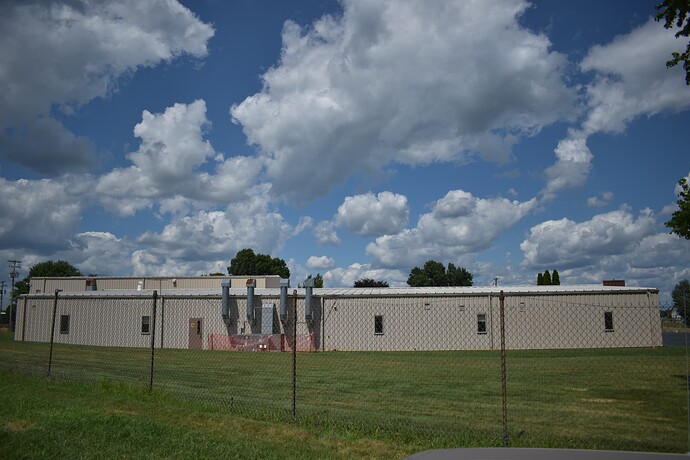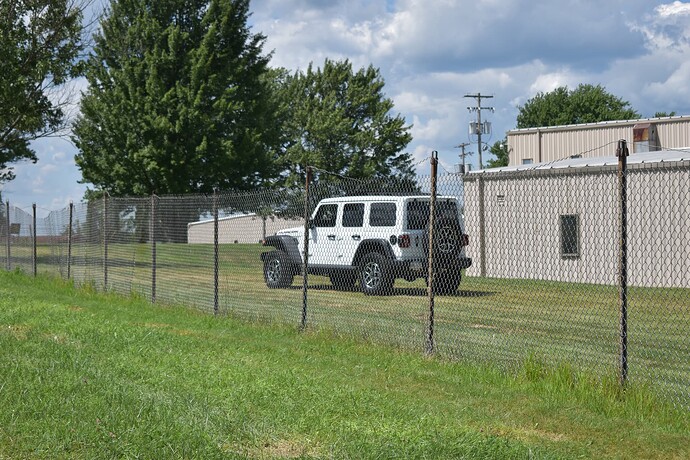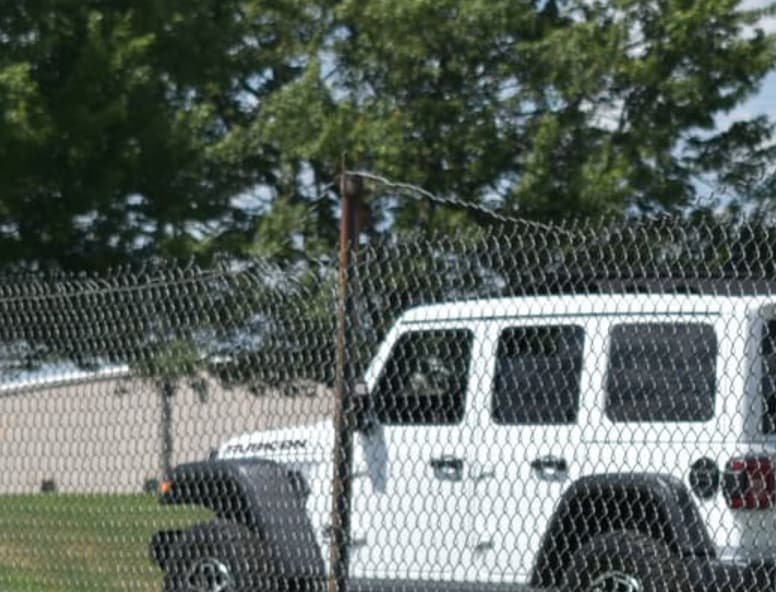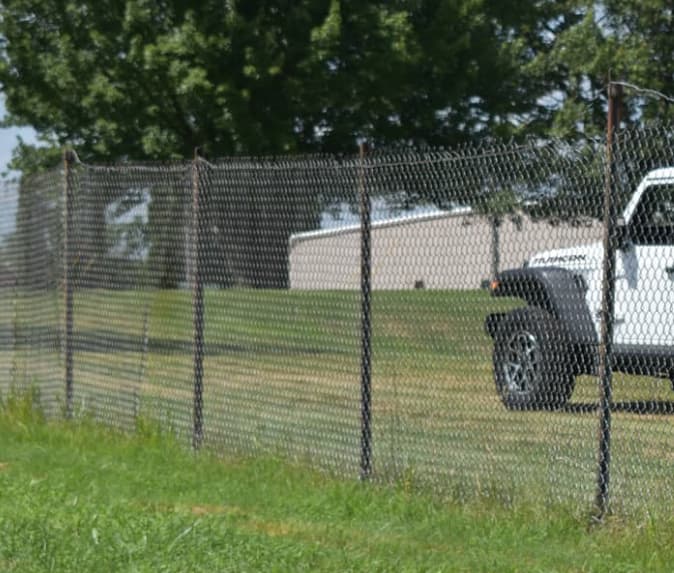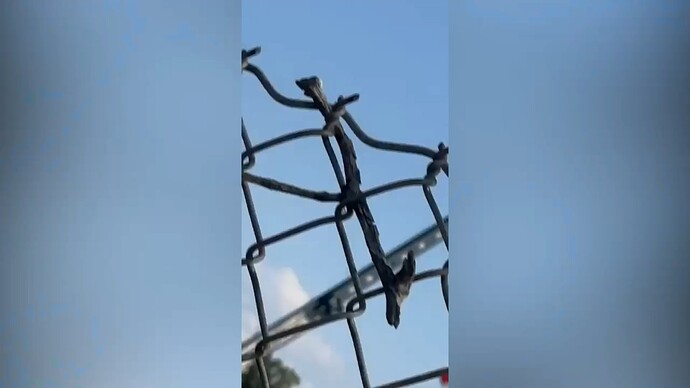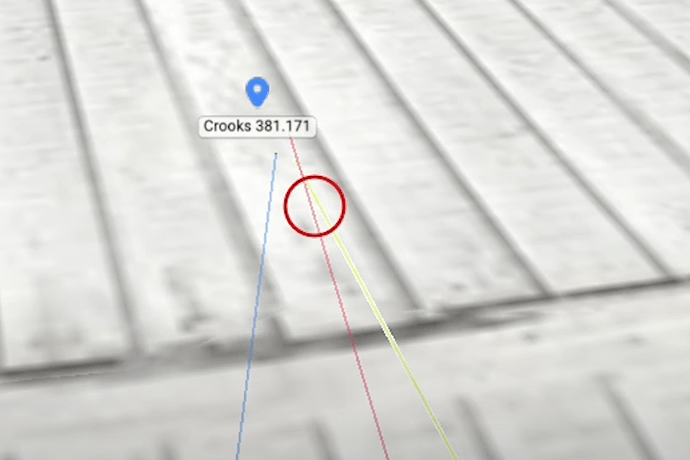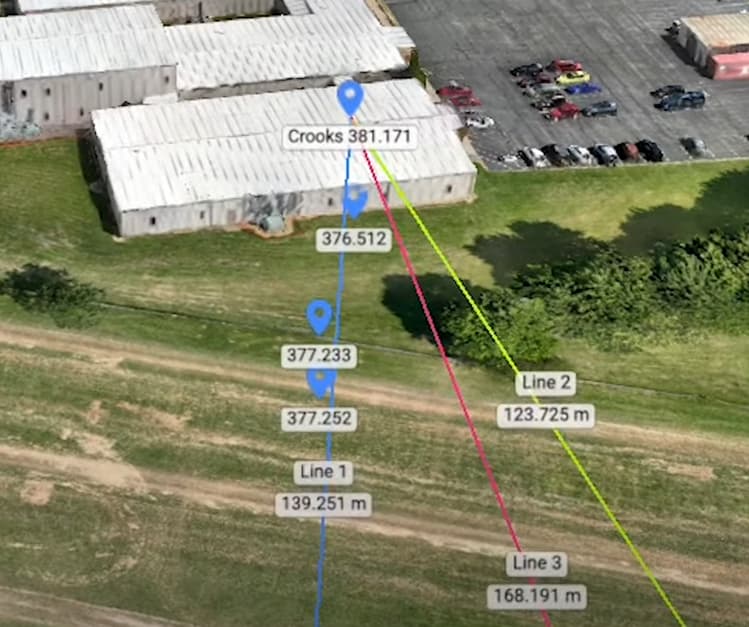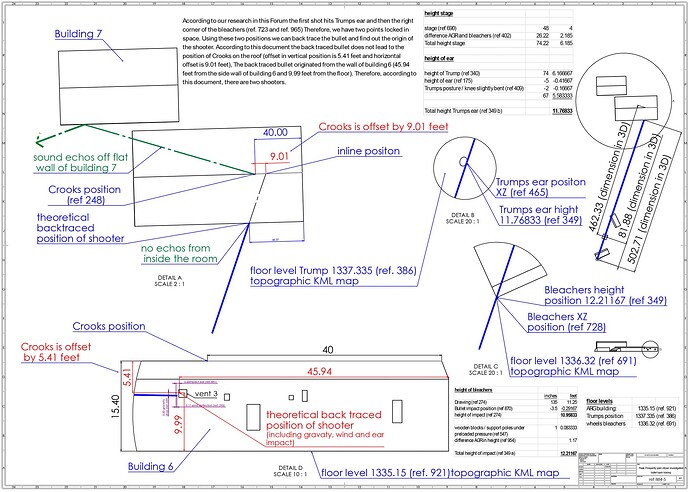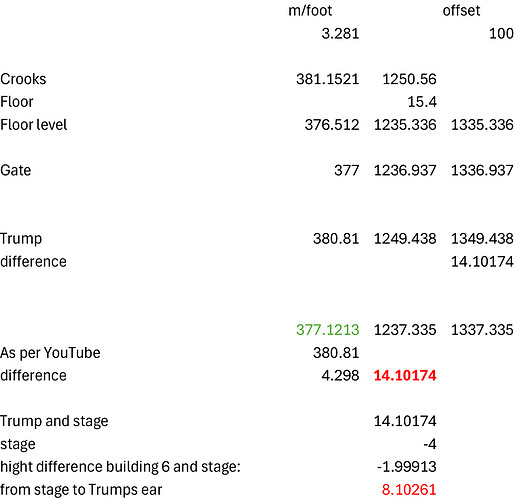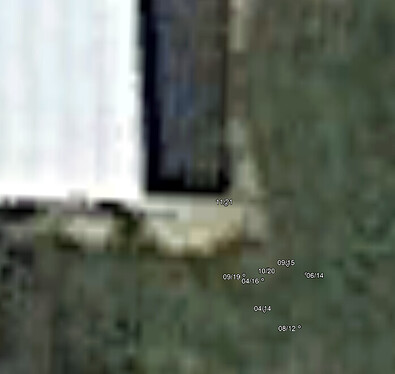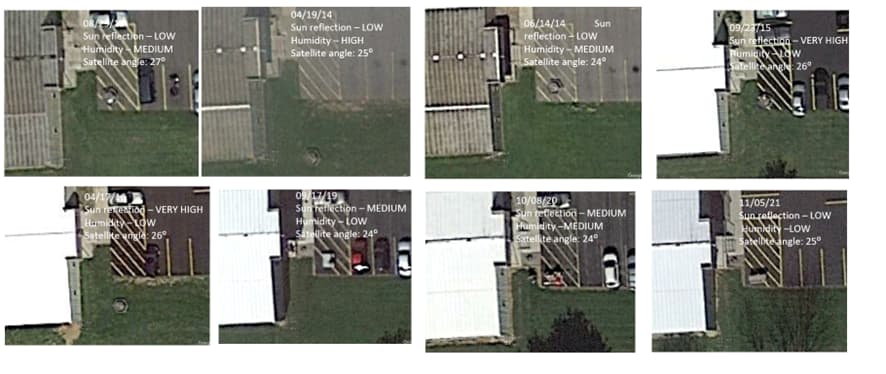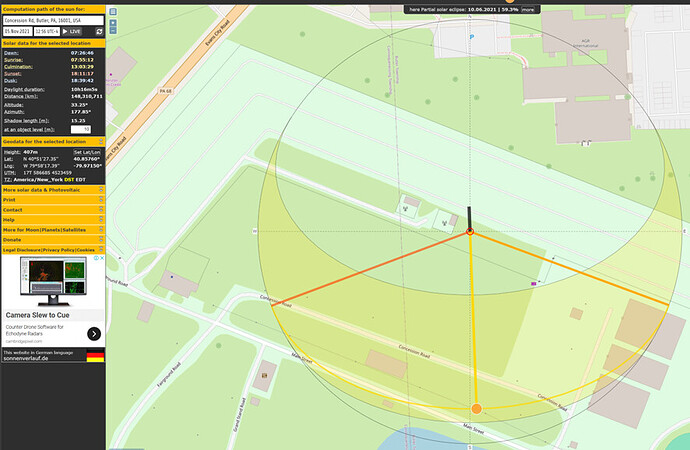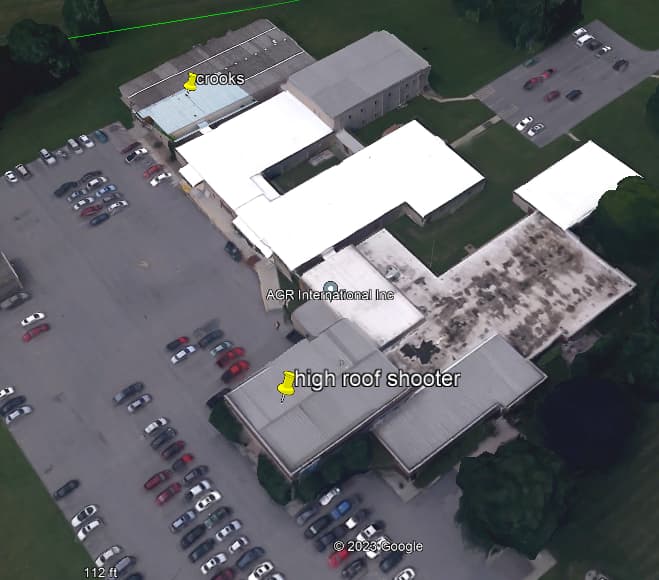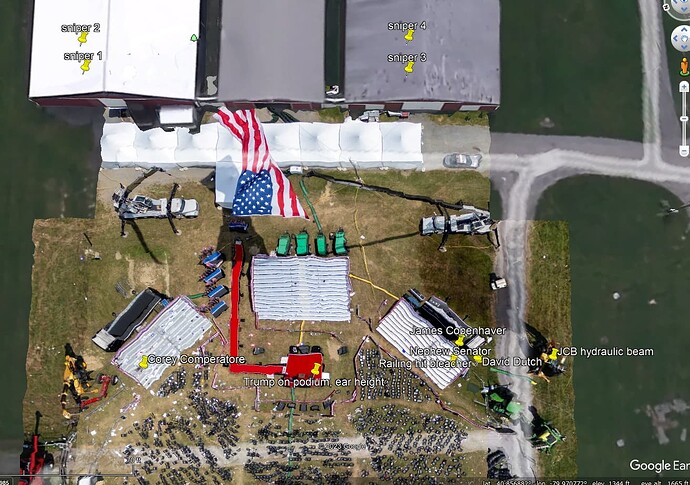@roger-knight what are your thoughts on this? Sound and casing at the 5-6 second mark.
Did you get further west too? 1 to 2 sections past that?
brian, ffmpeg parameters are often hard to understand. So does the “-map 0:a:0” parameter setting select the first stream?
Yes. To extract all the tracks from the dashcam video, I did stuff like this:
... -map 0:a:0 ... dashcam-track-0.wav
... -map 0:a:1 ... dashcam-track-1.wav
... -map 0:a:2 ... dashcam-track-2.wav
If you compare these two frames, you will see that what you recognize as a casing in the second image was already present in the previous frame. It was just not as bright there. A real casing would have to change its position from frame to frame.
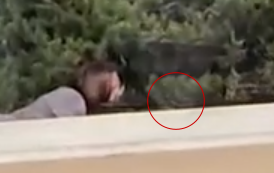
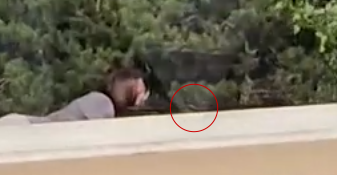
Thank you. Around 10 foot spacing, the bullet path is probably around 60 ft mark past tree by the gate for crossing over. That’s the 6th and last “tall” pole for like 3 sections. And the chainlink is all weird and pushed down there.
The likely spot for a trajectory from the 3rd window and the chainlink just so happens to be bent even further down, right there. Interesting.
No post caps for 2 sections right there, wire pulled down and not supported at all. That isn’t 6 foot there.
Edit: I’m not sure which exact fence section would be below a 3rd window shot. I’ll have to review more videos to try to get the exact point on the fence. I want to say that when I did the rough math early on, I used a 6 ft fence for clearance calculations anyways.
Well, I believe that I can clearly see it (on a computer monitor) being ejected at the 5-6 second mark of this video.
You have to say exactly which frame you mean and where exactly the casing is located.
Anything else is a waste of time.
Thank you for the clarification!
According to @greg_n, the sounds at 5:27 when he is getting the rifle out from the rear compartment told him that the tracks are:
Since English ist not my first language, I asked him what he meant by “Second row” (in contrast to “Rear compartment”), but he did not bother to answer that.
I pointed out already ten days ago, that there is a 10 ms phase shift between first and third track, with mic/stream2 in the middle. This, I then thought, could only be explained by a 3 m distance between mic/stream 1 and mic/stream3. I’m not sure about this anymore, but @offtheback found this really strange too, and I’m still waiting for a sound explication of that phenomen from Greg. All mics inside cabin and therefore muffled sound does not explain a phase shift of that scale.
edit: again, reply was meant for @brian60221
Duck Duck Go says:

I should have posted an update to this, I apologize for not doing so until being prompted by @pk2019 just now.
When I made that initial comment about the order of the 3 audio tracks, I assumed that the officer was getting his carbine out of the rear compartment (as I stated in the post). A few days later, I saw that officer’s bodycam, and it showed him getting the rifle out of the second row of his vehicle, not the rear. So, I was wrong about the track order. Here is an update. If I listen at 5:27 to the sound of him opening the rifle bag, this is what I hear:
Ch1: Zipper sound fairly clear, but a little muffled → Rear compartment
Ch2: Zipper muffled, A/C fan, radio clear → Front seats
Ch3: Zipper crystal clear → Second row
I don’t have an explanation for the observed phase shift. I see a similar 10 ms time difference between the tracks for Shot 9. I also don’t know why the channel order is Rear, Front, Middle. It seems more logical to go Front, Middle, Rear.
@pk2019, are you focused on this because you think the Cruiser audio may have been carefully edited to cause deception?
@bumblebeeez as you’re scoping out that fenceline, if you happen to locate this section of fence with the embeded twig and sign post behind it, please let us know the approximate lat/lon
This tells us where the Source 2 recorder was when the first shot was fired.
The phase shifts between tracks could be due to some extent to spacing of the mics longitudinally in the cabin; there could also be deterministic delays between the tracks just based on the equipment.
What there should NOT be are random jitter in the shots between the three tracks. Sometimes I am 9 msec delayed, sometimes 10, sometimes 12. This doesn’t agree with any physical model of the shot source(s).
Someone that understood signal processing would not have made this mistake, unless it was done on purpose to be detected.
Hi elmanchur,
Welcome to the club.
I assume you are referring to this video:
of which I watched with great interest. Please have a look at our drawing below, which is a joint back tracing bullet investigation project here at Peak Prosperity. The fact that the first shot touches Trumps ear and then hits the bleachers corner was a very fortunate event, locking two points in space. With these two points we can back trace the bullet to the original place of the shooter. There are two hypotheses heavily discussed all over the world, one being the official version, that Crooks shot all 8 shots. The second hypothesis is that the first 3 shots came from another place and Crooks shoots 4 – 8. With this project we are back tracing the bullet as described above and if the origine of the shooter leads back to Crooks position, our study would favorize hypothesis 1 (Crooks shoots all 8 shots). However, if the back traced bullet does not lead back to Crooks then hypothesis 2 would be favorized and it would give a hint from where the 2nd shooter was positioned.
I think this YouTube video is a direct reaction to our study to debunk it. This is why it is interesting to analyse this video. I was surprised however how much data we have in common. This is always nice to see, when you calculate something, and somebody finds the same result through a different way. It gives you confidence that our calculations are correct.
First, I would like to point out that they put the height of Crooks riffle at the position of the body. This is not correct, it shod be pointing on the roof gables:
OK, we can live with this small inaccuracy.
The drone is indicating levels in meters, which is OK, but somehow there is a 100-foot offset. Maybe somebody can explain this offset, but because it is exactly 100 feet, I trust that data from the drone. So, Crooks is at 381.171 and the floor level is at 376.512. This gives us three things we agree: Crooks position on the roof, the height of the building which was calculated in this forum (credit to the guy who drew this drawing) which is 15.5 feet and very important the 376.512 which would indicate with the 100-foot offset to be at approx. 1335. Many people get this wrong, so up to now everything looks legit ![]()
We go on and look at the height of the fence (which we are heavily discussing right now and again we agree, it is 2 feet higher than the level of building 6, namely at 1336.937 feet.
Now comes the part where we fundamentally disagree. The 380.81 is not coming from the drone.
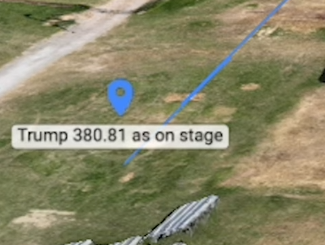
Why did they edit this number. They added their calculation of which we disagree. Assuming the drone gives out the same heights we have been finding, I calculated the number that should be the level of Trump stage, namely 377.1213m (or 1337.335 feet with the 100-foot offset). Gary does mention that the elevation of the terrain at the stage is slightly higher, which I would agree namely approx. 2 feet. So, assuming the drone gives the same elevation as we have, there are very few parameters to justify the height of trumps ear. They claim the absolute height of Trumps ear to be 14.1 feet compared to our calculation which is 11.76. If we deduct the 4-foot stage, it puts Trumps ear from of the stage at 8.1 feet which is impossible.
Let us play with the thought that our calculation is fundamentally wrong, and they got it right. This means the shot from crooks is almost perfectly horizontal. This would give us an impact on the bleachers at approx. 14 feet which again is totally wrong according to our calculation as well. The fact that Gary puts a rough calculation of the stage being 5 feet and Trump being 6.4, I would claim he is stacking tolerances, something he is accusing us of doing ![]()
Another fact is that the bleachers corner is higher than Trumps ear, which gives us another 2 feet lower in hight. Gary is not even taking the bleachers corner into consideratoin.
I think I could explain why we find a 5.41 foot offset compared to Gary. I am also adding my Excel calculation that should be self explanatory
We would really need that floor level of the stage (of which we assume is at 377.1213 meters from Gary and then they have to show how they calculated the height of the stage and the height of Trumps ear.
So I went back and very carefully measured down to the sample, because before I was just looking at the timings to the millisecond. The maximum jitter between the tracks, once I timed it to the sample, is 270 microseconds.
Still an issue. With these clean, virtually identical waveforms I can easily measure each peak to within about 60 microseconds (3 samples), generally less. A 270 microsecond difference should not be there.
Hi guys. I think we are all speaking apples and oranges here. I will address this to all 3D models (@roger-knight, @howdoiknowthisinfo) and acoustic models (@greg_n) creators.
1- Mercator projection bug: If use a placemark location on Google Earth with Mercator projection (UTM), it will truncate the Latitude and Longitude value after you save the pin. That will offset the position up to 1.4m.
The solution is to use the Decimal Degree on Tools>options and then convert to meters. This way the placemark will maintain accuracy up to 0.11m.
Conversion for this location (not equal to UTM ; This conversion was obtained by measuring 0.01 degree near the location):
Lat(m)= Lat(degree)*11105021
Lon(m) = Lon(degree)*8429686
2- Satellite image reference: we have at least 9 images dates. The images have different off-sets to geolocation. Here are the locations of South East lower corner of building 6 for 8 of the satellite images.
The images differ up to 2.5m.
The solution is to pick the best image for everyone to use. Here are the best 8 images. I classified them by Sun reflection (which makes the roof white saturated), Humidity (which makes the image blurry), satellite angle (which distorts the image projection on the ground).
I removed the 5/17/23 because it’s too blurry. For me the best images are 09/23/15, 04/17/16 and 11/05/21 with sharp edges and lines.
The 11/05/21 have less sun reflection. Also, this image has the trees without leaves. with makes a good reference for using the trunk of the trees as reference points. This is the satellite image I’m using.
3- Satellite angle projection error. The satellite has an approximate angle of 25 degrees on image 11/05/21. Measured by the projection of Building 6 height projection of 1.4m and the real dimension of 3m.
This distorts the perception of a position on a higher ground. For example, the real location of Crooks position is 1.86m to the East of his apparent position on the roof, considering his height is around 4m. The same correction applies to the south and north barn snipers. Their real position is 2.6m to the east.
4 - Photo superposition error. For matching of references of the photo on the Google image we must agree to same rules:
4.1- Always disable 3D buildings
4.2- Always use the closest objects on the photo to the point of interest. For example:
At Trump location, I use the light poles as references. In my 3D model I tested 4 images and resulted in an error of 1m on Trump position.
Obs.: Using this site, I found the angle of the shadows on light poles a manage to find the shadow azimuth angle (178.42 degrees) at the exact time of the satellite photo (11/05/21 at 12:58). A 10m object height on this satellite picture (11/05/21) will project a 15.25m shadow.
I think you meant to say “second term” instead of “second factor”. No problem, I’m not a math person either. It would be nice to be able to use the average velocity, but the distance from the path of the bullet to where the recorder is located is important (the off-line distance).
Yes, that’s the simple formula of Tdiff = d/Vc - d/Va, where Va = avg. velocity
That works well when the recorder is not standing off from the path of the bullet. I needed to apply the snick-boom measurements to the Source 2 and Source 6 recorders. So, that’s why the more complex formula was necessary. And for Shot 10, I used the formula with the Podium mic because the report was overwhelmed by the snick (at approximately the t+13 ms point).
Why would you assume “average velocity is 94% of muzzle velocity”? Is this a well established general fact? I tried googling it but didn’t come up with anything. Wouldn’t that factor of 0.94 decrease as the distance from the shooter increased?
which values (lon, lat, alt above sea level and alt above ground) for the following points:
- Trump’s ear
- ridge line of the roof of AGR building 6
- ridge line of the high roof behind crooks, so the highest building at the AGR parking
- interaction with the bleacher’s railing
- optional: the impact on the hydraulic line of the JCB hydraulic lift
- the victims David Dutch, James Copenhaver, Corey Comperatore
- the snipers 1-2-3-4 on the barn behind Trump
- optional: a nephew of a congressman (I do not know their names) got injured too. would you happen to have his coordinates too?
I have my version of coordinates for these points of interest, but it would be great if you could share me the values you would use for these…
thanks!
yes, that factor should be variable and depend on the distance/time travelled due to air resistance
as soon as my tool is ready, I will share the bullet’s velocity in terms of the travel time t, ballistic coefficient, etc…
